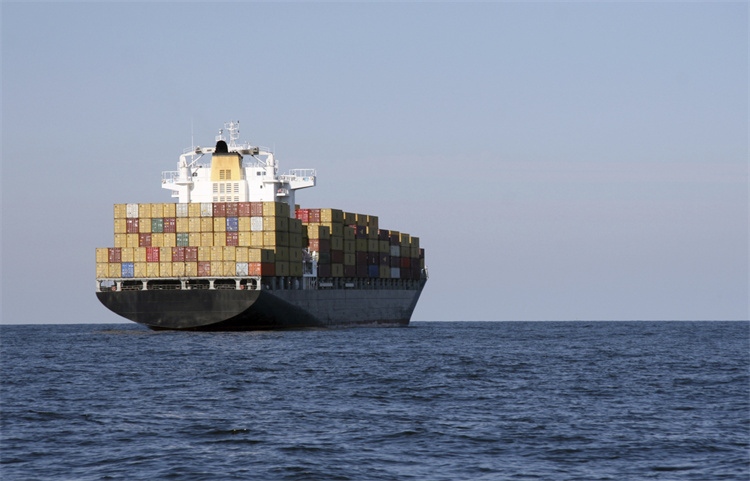Effective Strategies for Localized Supply Chain Management in America

Localized supply chains play a pivotal role in addressing modern challenges faced by businesses in America. They enhance resilience by mitigating risks from geopolitical tensions and climate change. Companies adopting localization strategies report reduced lead times and improved quality control, which boost operational efficiency. Additionally, sourcing locally decreases carbon emissions and supports community growth. Recent data shows that 60% of businesses now prioritize U.S.-based solutions to overcome disruptions, while 84% have re-evaluated their strategies. By focusing on supply chain localized compliance in America, organizations can achieve sustainability and foster long-term success.
Key Drivers of Localized Supply Chains

Geopolitical and Economic Shifts
Impact of trade policies and tariffs
Trade policies and tariffs have significantly influenced supply chain localisation in recent years. Businesses have shifted their focus to regional operations to mitigate risks from global disruptions. A KPMG survey highlights that the percentage of U.S.-serving supply chains in the Americas is expected to grow from 59% in 2023 to 69% by 2026. Mexico's role as a manufacturing hub is also expanding, with its share of U.S. supply chain operations projected to rise from 27% to 36%. These changes reflect the growing importance of localized strategies in ensuring resilience and reducing vulnerabilities.
Rising costs of global logistics
The rising costs of global logistics have further accelerated supply chain localisation. Multinational companies now prioritize regional suppliers to reduce transportation expenses and improve efficiency. The ongoing war between Russia and Ukraine has also prompted businesses to diversify their supplier portfolios. Additionally, new European Union regulations aimed at reducing carbon emissions have shifted the economics of importing goods, encouraging companies to explore localized opportunities. These factors underscore the need for businesses to adapt to evolving geopolitical and economic landscapes.
Consumer Demand for Local Products
Preference for locally sourced goods
Consumers increasingly prefer locally sourced goods due to their perceived quality and sustainability. This trend has driven businesses to adopt supply chain localisation to meet customer expectations. By sourcing locally, companies can enhance transparency and align with consumer values, creating new opportunities for growth. Local sourcing also supports community development, further strengthening brand loyalty among customers.
Faster delivery expectations
Faster delivery expectations have become a critical driver of supply chain localisation. Businesses benefit from reduced transportation costs and more predictable delivery times when working with local suppliers. This approach improves customer satisfaction by ensuring timely deliveries and better visibility into sourcing practices. Companies tailoring logistics to specific markets can also provide a more personalized experience, appealing directly to their target audience.
Supply Chain Localized Compliance in America
Navigating regional regulations
Navigating regional regulations is essential for successful supply chain localized compliance in America. Companies must understand and adhere to state-specific laws to avoid penalties and ensure smooth operations. This requires a proactive approach to compliance, including regular audits and employee training. By addressing regulatory challenges effectively, businesses can unlock opportunities for growth and maintain operational continuity.
Leveraging tax incentives for local production
Tax incentives play a vital role in encouraging supply chain localisation. Many states offer financial benefits to companies that invest in local production facilities. These incentives reduce operational costs and make localized strategies more attractive. Businesses leveraging these opportunities can enhance their competitiveness while contributing to regional economic development.
Challenges in Localized Supply Chain Management
Cost Management
Balancing local production costs
Localized supply chains often face higher production costs due to increased labor wages and operational expenses. Businesses must find ways to balance these costs without compromising quality. For instance, adopting automation and advanced manufacturing technologies can help reduce reliance on manual labor, thereby lowering expenses. Additionally, companies can explore partnerships with local governments to access subsidies or tax incentives that offset production costs. These strategies enable businesses to maintain competitiveness while addressing supply chain risks.
Managing price competitiveness
Price competitiveness becomes a challenge when localized products compete with cheaper imports. Companies must focus on value-driven strategies to differentiate their offerings. Emphasizing quality, sustainability, and faster delivery times can justify higher prices to consumers. Furthermore, businesses can streamline operations to reduce inefficiencies, ensuring they remain competitive in the market. By addressing these vulnerabilities, companies can enhance supply chain resilience and mitigate risks associated with pricing pressures.
Infrastructure Limitations
Gaps in local transportation networks
Transportation bottlenecks hinder the efficiency of localized supply chains. Limited access to raw materials due to inadequate transportation networks increases operational costs and creates additional hurdles. Businesses often rely on imports to fill these gaps, which can lead to supply chain disruption. Addressing these challenges requires investment in infrastructure development and collaboration with local authorities to improve logistics networks.
Limited warehousing capacity
Insufficient warehousing capacity poses another significant challenge. Companies struggle to store and manage inventory effectively, leading to inefficiencies and higher costs. Labor shortages and rising wages further exacerbate this issue. To overcome these obstacles, businesses can adopt innovative solutions like cloud warehousing and dynamic inventory management. These approaches enhance supply chain resilience by optimizing storage and reducing vulnerabilities.
Supplier Diversity and Availability
Ensuring a reliable supplier base
Building a diverse and reliable supplier base is crucial for localized supply chains. Companies can redefine procurement policies to include diverse suppliers and rethink insurance requirements to accommodate smaller vendors. Offering support such as training and resources fosters collaboration and strengthens relationships with local suppliers. These efforts ensure a robust supply chain that can withstand disruptions.
Managing risks of supplier dependency
Supplier dependency increases supply chain risks, especially during disruptions. Companies can mitigate these risks by diversifying their supplier networks and implementing contingency plans. Enhancing visibility across the supply chain through data and forecasting tools also improves adaptability. For example, businesses like Procter & Gamble have shifted to regional supply chains to contain disruptions within specific areas. This approach reduces vulnerabilities and ensures continuity in operations.
Technology and Data Integration
Lack of advanced digital tools
Localized supply chains often struggle due to the absence of advanced digital tools. Many businesses rely on outdated systems that fail to meet the demands of modern supply chain management. These limitations hinder their ability to adapt to supply chain disruptions and reduce operational efficiency. Technology plays a vital role in overcoming these challenges by introducing innovative solutions. For instance, on-demand manufacturing and predictive demand forecasting enable companies to recover quickly from disruptions while maintaining efficiency.
Several advanced technologies are transforming supply chain management. Generative AI and machine learning enhance decision-making by analyzing vast amounts of data. Automation streamlines repetitive tasks, reducing errors and improving productivity. The Internet of Things (IoT) and blockchain provide real-time data sharing and secure transactions, fostering collaboration across the supply chain. By adopting these tools, businesses can build resilient and efficient localized supply chains.
Challenges in real-time visibility
Real-time visibility remains a critical challenge for localized supply chains. Many companies lack the infrastructure to track shipments and monitor conditions effectively. This gap reduces their ability to respond to risks and optimize operations. Enhanced shipment visibility offers solutions by providing transparency beyond location tracking. It includes condition monitoring and security, ensuring goods remain safe during transit.
Real-time data also supports data-driven decision-making. Companies can anticipate problems and adjust operations proactively. Improved route planning and reduced transit times increase operational efficiency. Additionally, accurate delivery updates and proactive issue resolution enhance customer satisfaction. Supply chain visibility ensures businesses can meet market demands while minimizing risks.
Tip: Investing in technologies like IoT and data analytics can significantly improve supply chain visibility and operational efficiency.
Effective Supply Chain Strategies for Localized Management
Leveraging Technology and Automation
Implementing supply chain management software
Supply chain management software plays a crucial role in enhancing operational efficiency. By automating repetitive tasks, businesses can reduce human intervention and minimize errors. Advanced tools like AI and IoT improve demand forecasting and inventory management, ensuring better quality control. Real-time data sharing fosters collaboration among supply chain partners, enabling seamless communication and coordination. Predictive maintenance features also help identify potential equipment failures, reducing downtime and ensuring smooth operations.
Key Benefits of Technology and Automation:
Benefit
Description
Efficiency
Automation enhances operational efficiency by reducing human intervention in logistical tasks.
Cost Savings
Streamlining processes leads to reduced operational costs and improved profitability.
Quality Control
Technologies like AI and IoT improve accuracy in demand forecasting and inventory management.
Enhanced Collaboration
Real-time data sharing fosters better communication and coordination among supply chain partners.
Predictive Maintenance
AI predicts equipment failures, minimizing downtime and ensuring smooth operations.
Automated Demand Forecasting
Machine learning improves accuracy in predicting future demand based on historical data.
Adopting Agile and Flexible Practices
Diversifying supplier networks
Diversifying suppliers is a critical strategy for enhancing supply chain agility. Businesses can mitigate risks by sourcing from multiple suppliers, reducing dependency on any single vendor. This approach ensures continuity during disruptions and improves adaptability. Diversification also promotes innovation by introducing new perspectives and solutions into the supply chain.
Implementing just-in-time inventory systems
Just-in-time inventory systems align perfectly with localized supply chain strategies. Local suppliers can quickly adjust production schedules, ensuring responsiveness to demand fluctuations. Shorter supply chains lead to faster delivery times, minimizing stockouts and overstock situations. By streamlining operations and reducing costs, just-in-time systems enhance efficiency and support agile inventory management.
Prioritizing Sustainability
Sourcing eco-friendly materials
Sourcing eco-friendly materials is a cornerstone of sustainable practices in localized supply chains. Businesses can reduce their environmental impact by prioritizing materials that are renewable, recyclable, or biodegradable. Local sourcing minimizes transportation distances, which lowers emissions and energy consumption. This approach also supports local ecosystems and fosters cultural alignment, as suppliers often share a commitment to environmental preservation. Enhanced visibility into local suppliers' operations ensures adherence to sustainability goals, creating a transparent and traceable supply chain.
Reducing waste in the supply chain
Reducing waste is another critical aspect of sustainability. Companies can adopt lean manufacturing techniques to minimize excess production and optimize resource use. Recycling and reusing materials further decrease waste, contributing to a circular economy. Shorter supply chains enhance efficiency by reducing overstocking and spoilage risks. These strategies not only benefit the environment but also improve operational agility and cost-effectiveness. Businesses that implement waste reduction initiatives demonstrate their commitment to sustainable practices, strengthening their brand reputation.
Investing in Workforce Development
Training local talent
Investing in local talent is essential for building a resilient supply chain. Companies can offer training programs to equip workers with the skills needed for modern supply chain management. These initiatives create job opportunities and support community development. By fostering a skilled workforce, businesses enhance productivity and ensure the long-term success of their operations. Training also aligns with reshoring efforts, as it prepares local communities to meet the demands of returning industries.
Upskilling employees for advanced technologies
Upskilling employees for advanced technologies is vital in today's digital age. Workers trained in automation, IoT, and data analytics can better manage supply chain complexities. This investment improves efficiency and reduces reliance on manual processes. Upskilling also empowers employees to adapt to technological advancements, ensuring the workforce remains competitive. Companies that prioritize workforce development gain a strategic advantage by fostering innovation and agility within their operations.
Bringing Production Closer to Home with JUSDA in North America
Nearshoring strategies for the US-Mexico region
Nearshoring has become a key strategy for businesses in North America. By relocating production to Mexico, companies benefit from reduced transportation costs and shorter lead times. JUSDA's expertise in nearshoring helps businesses navigate the complexities of cross-border operations. Its solutions address regulatory compliance and risk management, ensuring seamless integration of supply chain activities. Nearshoring also supports regional economic growth by creating jobs and fostering collaboration between the US and Mexico.
Enhancing cross-border logistics with JUSDA's solutions
JUSDA's innovative logistics solutions enhance cross-border operations by streamlining processes and improving efficiency. The company's comprehensive carrier network and advanced technologies ensure timely and secure transportation of goods. JUSDA's focus on regulatory compliance and risk management simplifies the handling of hazardous materials, such as lithium batteries. These capabilities make JUSDA a trusted partner for businesses bringing production closer to home. By leveraging JUSDA's expertise, companies can optimize their supply chains and capitalize on nearshoring opportunities.
Case Studies: Successful Localized Supply Chain Implementations

Example 1: A Small-Scale Manufacturer
Leveraging local suppliers for resilience
A small-scale manufacturer utilized local suppliers to build a resilient supply chain. By sourcing materials locally, the company reduced its reliance on global suppliers, minimizing risks from geopolitical tensions and transportation delays. This approach also shortened lead times, enabling the manufacturer to respond quickly to market demands. Streamlined operations further enhanced their ability to adapt to changes, ensuring consistent production and delivery.
Achieving sustainability goals
The manufacturer achieved sustainability goals by adopting localized supply chains. Nearshoring minimized transportation emissions, reducing the company’s carbon footprint. Smaller, environmentally friendly facilities contributed to a circular economy by recycling materials and reducing waste. These efforts not only supported sustainability but also fostered collaboration with local communities, strengthening the company’s reputation as a responsible business.
Example 3: JUSDA's Collaboration with Sharp
Streamlining global e-commerce logistics
JUSDA partnered with Sharp to address supply chain complexities and improve global e-commerce logistics. The collaboration introduced the JusLink platform, which integrated advanced technologies like Warehouse Management Systems (WMS) and Transportation Management Systems (TMS). These tools provided real-time visibility into inventory and shipments, streamlining operations and reducing inefficiencies. The partnership also optimized Sharp’s logistics flow, eliminating unnecessary inventory and improving resource allocation.
Achieving cost and labor efficiency through JusLink
The JusLink platform delivered remarkable results for Sharp. Logistics costs decreased by 20%, while labor costs dropped by 70%. Order delivery times improved by 30%, ensuring faster and more accurate fulfillment. These achievements highlight the effectiveness of JUSDA’s solutions in enhancing supply chain resilience and efficiency. By leveraging innovative technologies, JUSDA enabled Sharp to overcome supply chain challenges and achieve long-term success.
Localized supply chain management remains vital for businesses in America. It enhances resilience, reduces risks, and supports sustainability. Companies can overcome challenges by adopting strategies like leveraging technology, fostering supplier relationships, and prioritizing sustainability. These approaches unlock opportunities for growth and efficiency.
Note: Businesses that embrace localized supply chain strategies position themselves for long-term success. JUSDA offers innovative solutions tailored to meet these needs, making it a reliable partner for navigating the complexities of modern supply chains.
By acting now, organizations can build stronger, more adaptable supply chains for the future.
See Also
Enhancing Strategies to Tackle Supply Chain Challenges in Tech
Discover 5 Creative Approaches to Supply Chain Improvement
Addressing Global Supply Chain Growth Obstacles Effectively
Essential Techniques for Successful Supply Chain Optimization
